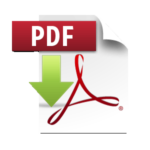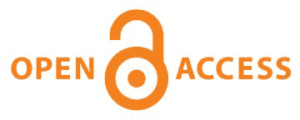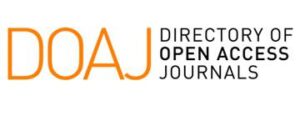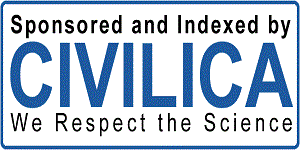مروری بر پروتکل های القای عصبی سلول های بنیادی پالپ دندان در شرایط آزمایشگاهی
مریم یزدچی1 فاطمه بهروزنژاد1 *آزاده حسن پور2و3
- گروه زیست شناسی، دانشکده علوم پایه، دانشگاه دولتی شهرکرد، شهرکرد، ایران.
- گروه زیست شناسی، مرکز تحقیقات زیست فناوری پزشکی، واحد اشکذر، دانشگاه آزاد اسلامی، یزد، ایران.
- مرکز تحقیقات پزشکی قانونی، سازمان پزشکی قانونی کشور، تهران، ایران.
*پست الکترونیک مسئول مکاتبات: [email protected]
چکیده
تا به امروز، سلول های بنیادی مختلف بالغی در حفره ی دهان شناسایی شده اند، از جمله سلول های بنیادی پالپ دندان ،سلول های بنیادی فولیکول دندانی ، سلول های بنیادی پاپیلا آپیکال، سلول های بنیادی رباط پریودنتال و سلول های بنیادی مزانشیمی از لثه. همه ی این سلول ها دارای پتانسیل عصبی هستند و از سلول های ستیغ عصبی در دوران جنینی منشا گرفته اند که می توان از آنها در سلول درمانی و نقص سیستم عصبی که امروزه به یک چالش بزرگ تبدیل شده استفاده کرد. یکی از پرکاربردترین این سلول ها ، سلول های بنیادی پالپ دندانی است که پتانسیل ذاتی بالایی برای تمایز به عصب دارد. این سلول ها دردسترس ترین و دور ریختنی ترین منابع هستند و به علت شخصی سازی این سلول ها مشکلات رد پیوند را هم به همراه ندارد. علاوه بر این مطالعات زیادی در زمینه ی استفاده ی این سلول ها در تولید داروها و غربالگری های دارویی عصبی انجام شده است. مطالعات زیادی بر روی تمایز عصبی سلول های بنیادی دندان انجام شده که در این مقاله مروری کوتاه بر این پروتکل ها خواهیم داشت.این پروتکل ها نه تنها توسط محیط کشت تعریف می شوند بلکه محیط حاوی محیط پایه به علاوه فاکتورهای رشد، مولکولهای کوچک و سایر مکمل های کشت ، همچنین با استفاده از پوششهای زیر لایه / سطحی، وجود مراحل مختلف کشت، کل دوره کشت ،تراکم کشت اولیه و اینکه آیا شکل کروی / نوروسفر برای بازآرایی استفاده شده برای محیط تمایز عصبی سه بعدی است که به طور طبیعی از نظر فیزیولوژیکی در داخل بدن است. به امید اینکه با مطالعات بیشتر در زمینه ی القای عصب بتوان امیدی در راه درمان بیماری های نقص سیستم عصبی پیدا کرد.
کلمات کلیدی
سلول های بنیادی دندان، تمایز عصب ، پروتکل عصبی، پتانسیل عصبی
An Overview of Protocols for the Neural Induction of Dental and Oral Stem Cells In Vitro
Maryam Yazdchi1 Fatemeh Behroznejad1 * Azadeh Hasanpour2,3
- Department of Biology, Faculty of Basic Sciences, Shahrekord University, Shahrekord, Iran.
- Department of Biology, Medical Biotechnology Research Center, Ashkdez Branch, Islamic Azad University, Yazd, Iran.
- Forensic Medicine Research Center, Forensic Medicine Organization, Tehran, Iran.
*Correspondence E-mail: [email protected]
Abstract
To date, various adult stem cells have been known in the oral cavity, including dental pulp stem cells, dental follicle stem cells, papillary apical stem cells, periodontal ligament stem cells, and gingival mesenchymal stem cells. All of these cells have nerve potential and are derived from embryonic stem cells in the embryo, which can be used in cell therapy and nervous system defects, which has become a major challenge today. One of the most widely used of these cells is the dental pulp stem cells, which have a high innate potential for neuron differentiation. These cells are the most accessible and disposable resources and due to the personalization of these cells do not cause transplant rejection problems. In addition, many studies have been performed on the use of these cells in the production of drugs and neurological drug screening. Many studies have been done on the neural differentiation of dental stem cells, and in this article, we will have a brief overview of these protocols. These protocols are not only defined by the culture medium but also the medium containing the base environment desirable growth factors, small molecules and others. Culture supplements, also using substrate/surface coatings, the presence of different culture stages, the total culture period, the initial culture density, and whether the spherical/neutrosphere shape for rearrangement used for the three-dimensional neural differentiation medium is naturally the physiological view is in vivo. Hopefully, with further studies on nerve induction, hope can be found in the treatment of diseases of the nervous system.
Keywords
Dental pulp stem cells, neuron differentiation, neuron protocol, neuron potential
1,410 بازدید





